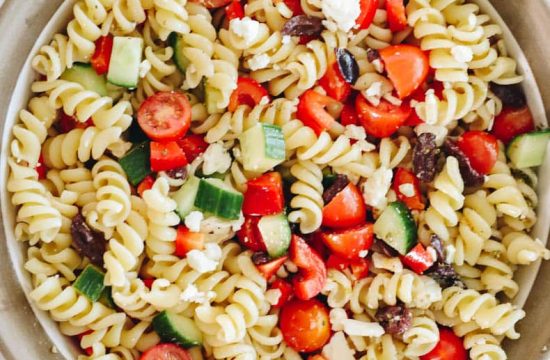Article by Dr Raghuram Y.S. MD (Ay) & Dr Manasa, B.A.M.S
Madanaphala – Randia dumetorum, an emetic nut as it is called, is the best and safest emetic according to Ayurveda. It is used either singly or in combination with other herbs to induce safe vomiting and is therefore an integral part of Vamana therapy – therapeutic emesis.
Any Panchakarma unit or department of therapy room is incomplete without having ‘Madanaphala’ in its store bank.
The first chapter of ‘Charaka Kalpa Sthana’ has been entirely dedicated to the explanation of ‘Madanaphala’ and its preparations / recipes which could be used in ‘emesis therapy’ as a part of Panchakarma treatments.
A total of one hundred and thirty-three recipes of Madanaphala have been detailed in this chapter wherein the medicine is seen to be used in different forms.
One recipe among these 133 Madanaphala preparations is the ‘Ghreya Yoga’. It is a method in which the patient is made to smell the ‘Madanaphala’ recipe prepared for the purpose of smelling. In this method of preparation, the smell of this recipe will induce safe emesis. Since it is used through the nasal route, it is also called as ‘Madanaphala Nasya Yoga’.
There is only one recipe found explained in this chapter which can be used in the form of ‘Ghreya’.
Procedure of administering emetic therapy using Madanaphala Ghreya Yoga
1. Purvakarma: Preparatory procedures
a. Preparation of ‘Madanaphala Ghreya Yoga’ – Recipe of madana-phala for inhalation
फलपिप्पलीनांफलादिकषायेणत्रिःसप्तकृत्वःसुपरिभावितेनपुष्परजःप्रकाशेनचूर्णेनसरसिसञ्जातंबृहत्सरोरुहंसायाह्नेऽवचूर्णयेत्, तद्रात्रिव्युषितंप्रभातेपुनरवचूर्णितमुद्धृत्यहरिद्राकृसरक्षीरयवागूनामन्यतमंसैन्धवगुडफाणितयुक्तमाकण्ठंपीतवन्तमाघ्रापयेत्सुकुमारमुत्क्लिष्टपित्तकफमौषधद्वेषिणमिति समानंपूर्वेण||१९||
Method of preparation of ‘Ghreya’ recipe
1. Bhavana – impregnation of Madanaphala seeds
Seeds of madanaphala are collected.
These seeds are well impregnated with the decoctions of the below mentioned herbs –
1. Madanaphala
2. Jimutaka
3. Ikshvaku
4. Dhamargava
5. Kutaja
6. Kritavedhana
This impregnation should be done twenty-one times.
2. Drying and powdering the impregnated seeds
After this, when the procedure is complete and the seeds have been dried properly, they are made into fine powder resembling the pollen of flowers.
3. Sprinkling the Madanaphala powder on lotus flower
On the same day, in the evening, a big sized lotus flower growing in a pond is selected. The Madanaphala powder which has been prepared in the method as explained above should be sprinkled over the lotus flower and left on it overnight.
Next morning, the same powder of Madanaphala is once again sprinkled over the lotus petals and the flower is plucked.
4. Indications for ghreya yoga
The Ghreya Yoga – inhalation recipe prepared using madanaphala seeds and sprinkled on the petals of lotus is given for inhalation in the below mentioned conditions –
– Sukumara – patients who are tender in nature / constitution
– Utklishta pitta kapha – patients having excited pitta and kapha
– Aushadha dweshi – patients who has aversion towards oral consumption of medicines
b. Preparation of the patient for emesis therapy
अथच्छर्दनीयमातुरंद्व्यहंत्र्यहंवास्नेहस्वेदोपपन्नंश्वश्छर्दयितव्यमितिग्राम्यानूपौदकमांसरस-क्षीर-दधि-माष-तिल शाकादिभिःसमुत्क्लेशितश्लेष्माणंव्युषितंजीर्णाहारंपूर्वाह्णेकृतबलिहोममङ्गलप्रायश्चित्तंनिरन्नमनतिस्निग्धं……..मन्त्रेणानेनाभिमन्त्रयेत्- Cha.Ka.Sth.1/14
1. Snehana and Swedana – Oleation and Sudation
Before administering vamana – emetic therapy, the patient should be administered with snehana – oleation and swedana – sudation / fomentation therapies for a time period of two or three days.
2. Kapha Utkleshakara Ahara – Kapha exciting diet
He should be given the diet consisting of the soup of the meat of gramya (domesticated), anupa (marshy land- inhabiting) and audaka (aquatic) animals and birds, milk, curd, black gram, sesame seeds, vegetables, etc, during the night before the day of administration of vamana. These foods are given with an intention of causing excitation of kapha. When kapha gets excited, it can be easily expelled through emesis therapy.
3. Rituals and gruel
On the next morning the physician should make sure that the food taken the previous night by the patient should have been digested properly.
Later, the rituals including bali – religious sacrifices, homa – sacred ritual of offering oblations of ghee to fire, mangala – auspicious rituals and prayaschita – rituals for neutralizing the effects of possible sinful acts should be conducted.
2. Pradhana Karma: Administration of Vamana – Ghreya Yoga
The emetic medicine – Ghreya Yoga (the preparation of which has been explained above) in this context – should be impregnated with the below mentioned mantra.
‘ॐब्रह्मदक्षाश्विरुद्रेन्द्रभूचन्द्रार्कानिलानलाः|
ऋषयःसौषधिग्रामाभूतसङ्घाश्चपान्तुते|
रसायनमिवर्षीणांदेवानाममृतंयथा|
सुधेवोत्तमनागानांभैषज्यमिदमस्तुते’|
इत्येवमभिमन्त्र्योदङ्मुखंप्राङ्मुखंवाऽऽतुरंपाययेत्…..पुनःपुनरापित्तागमनात्, तेनसाधुवमति…|Cha.Ka.Sth.1/14
Original mantra
“Om brahma- daksasvirudrendra-bhu-candrarkanilanah|
Rsayah sausadhigrama bhutasanghasca pantu te||
Rasayanamivarsinam’devanam amrtam yatha|
Sudhevottamanaganam Bhisajyam idam astu te||”
Translation of the mantra:‘May Brahma, Daksha, the Asvins, Rudra, Indra, the Earth, the Moon, the Sun, the Wind, the Fire, the Sages, all the drugs and all the living beings protect you.
May the recipe produce the same effects on you, just like the rejuvenating recipes have done to the sages, as the ambrosia has done to the gods, and as sudha – a type of ambrosia has done to the chief of the nagas.
After the recipe has been impregnated with the mantra described above, it is administered to the patient while he is facing towards the east or the north repeatedly.
Method of administration of Madanaphala Ghreya Yoga
The recipe is kept ready and so is the patient, after all the rituals are done.
After ascertaining that the patient is on empty stomach (has not eaten anything) and who has not been administered with excessive oleation (anati snigdha) he or she is made to drink throat full (until saturation) Haridra – turmeric, Krshara – a type of gruel preparation containing or prepared from rice and lentils, milk or gruel after adding saindhava – rock salt, guda – jaggery and phanita – treacle.
Following this the patient is administered ghreya yoga – inhalation therapy of madanaphala, i.e. he or she is made to inhale the lotus flower on which the powder of madanaphala is sprinkled.
With this, the person / patient will vomit effortlessly.
It should be given till the pitta – bile comes out along with the vomited material and all symptoms of Samyak vamana i.e. properly induced emesis therapy are seen.
3. Paschat Karma: Post emesis follow up
It is the same as for any emesis therapy. It comprises of –
Observation and management
The physician should observe for Samyak vanta lakshanas – signs of properly done emesis therapy. If there are signs of excessive vomiting, the patient should be rested and any related signs and symptoms should be managed.
हीनवेगंतुपिप्पल्यामलक-सर्षपवचाकल्कलवणोष्णोदकैः पुनःपुनःप्रवर्तयेदापित्तदर्शनात् ||१४|| Cha.Ka.Sth.1/14
If the urge for vomiting is weak, then this is augmented by the repeated administration of the paste of pippali – Piper longum, amalaka – Emblica officinalis, sarsapa – mustard and vacha – Acorus calamus – added with salt and warm water till the bile appears in the vomited material.
Dhumapana
If vomiting has taken place properly and signs of it are present and noted, the next step is to administer dhumapana (medicated smoking) to expel any remaining kapha.
Samsarjana Krama
Graduated dietetic protocol starting with liquid diet is planned keeping in view the strength of agni – digestive fire, which has temporarily compromised due to the impact of treatment. Over a period of 3, 5 or 7 days, the person is brought back to the format of normal food which is conducive and habituated to him.
Aushadha, Ahara, Vihara
The dosha balancing and disease checking medicines, diet and lifestyle modifications are recommended in the follow up as part and parcel of maintenance and also to prevent recurrences.
Mode of action
How does Ghreya Yoga work?
We all would have experienced a puking feel when we smell something which does not go well with us i.e. incompatible or intolerable smells. These smells can be different for different persons but on an individual basis, any smell which is irritating, uncomfortable, putrid, decaying smells inducing vomiting sensation or vomiting itself by activating vomiting centres in the brain.
Hyperosmia is a condition wherein strong and unpleasant odors can be overwhelming and may cause nausea or vomiting. People with this condition can have ‘trigger smells’ i.e. smells which are particularly offensive to them. Changes happening to the sense of smell may trigger an increase in headaches and nausea and vomiting.
So, an unpleasant and unfamiliar smell can cause vomiting by stimulating the vomiting centres in the brain. The smell of madanaphala too is unpleasant and unfamiliar. Moreover, it is triturated with many other decoctions of various emetic herbs to enhance this effect to induce nausea and vomiting. The collective effect of these herbs would cause vomiting in the patient.
Nasya Effect – When the person smells the madanaphala powder sprinkled on the lotus petals, he would also inhale the particles of the powder, which will act as pradhamana or churna nasya – powder errhine. This would irritate and stimulate the nasal mucosa and the nerves therein. This would later stimulate the vomiting centres in the brain and cause emesis.
This ‘emesis through smelling or nasal stimulation’ is administered to those who are tender in constitution and cannot tolerate the tough procedure of vamana wherein the emetic medicine is administered orally and also to those who have aversion to medicines. It is also given in conditions wherein there is excitation of kapha, pitta or body doshas in the stomach, ready to get expelled. So, nothing much other than making the patient smell something nauseous is essential to induce the process.















